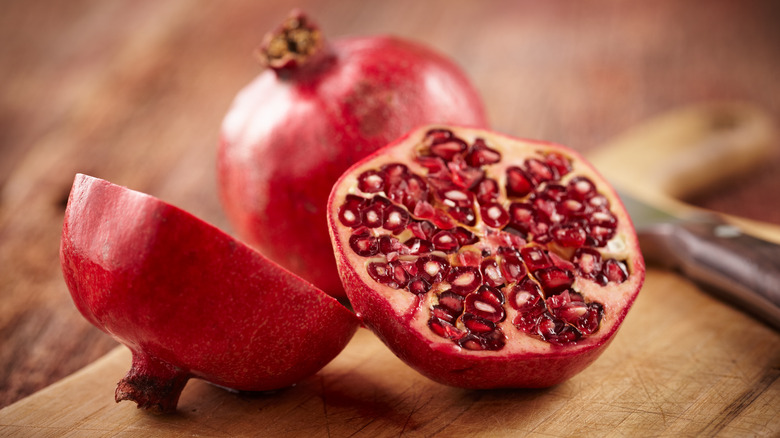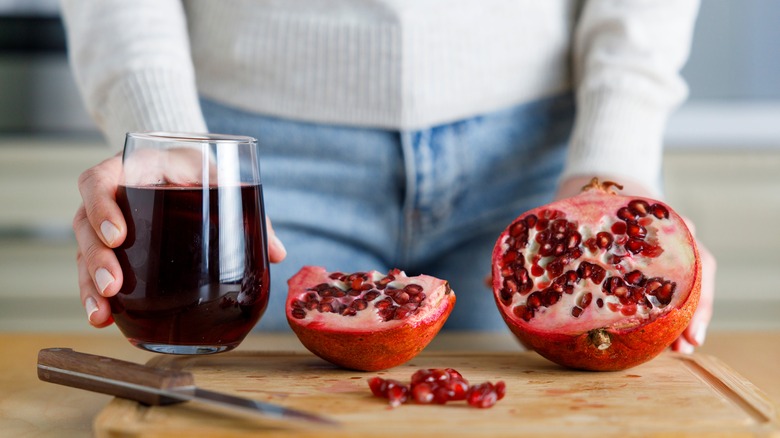The Best Way To Tell When A Pomegranate Is Ripe
From Greek myths to modern grocery stores, the legacy of the pomegranate spans thousands of years. The unique fruit is an edible relic, originating as far back as the Bronze Age and making its way from ancient Persia to produce sections around the world. In the U.S., pomegranates are grown domestically in the hot and dry climates of California and Arizona, reaching their peak harvest season from September through early January. It's why, in the West, they've gained a reputation as being a fall and winter fruit whose flavor can be found in a number of festive holiday recipes.
But even if you know the ideal season to buy pomegranates, how can you tell if the fruit you're picking up is the best it can be? To find a perfectly ripe pomegranate, there are a number of factors to look for, starting with its shape. A ripe pomegranate should have more flattened, angular sides rather than a uniformly spherical shape. Additionally, the texture of its thick outer skin should feel firm and leathery at its ripest — to test, you can try running your nail across it to see if it scratches easily, which is a good indicator that it's ready to eat. Finally, you'll want to consider the weight of the fruit in your hand. The heavier it is, the juicier the seeds are, meaning they're good to go.
How to incorporate pomegranate into your cuisine
It's not hard to guess why the crop has stood the test of time. The ruby red fruit contains hundreds of seeds, which burst with a sweet and tart juice that, as it happens, is as delicious as it is healthy. These days, the juice is hailed as a superfood because it contains hefty doses of antioxidants and flavonoids, compounds that can help lower blood pressure and cholesterol, regulate blood sugar levels, and protect against a number of health issues, according to WebMD.
While you can simply crack open a pomegranate and pop the seeds into your mouth as a snack that's equal parts crunchy and juicy, there are plenty of ways to incorporate the robust flavor into dishes. For example, you can mix the seeds into a hearty wheat berry salad, mixed with grains and feta cheese that nod to the fruit's Middle Eastern origins. You can also reduce the juice to a thick and sweet molasses and use it to create the distinctly Persian dish, fesenjoon, a stew of pomegranate juice, walnuts, and tender duck legs.
And if you'd prefer to sip it? Pomegranate juice makes an excellent addition to cocktails, especially when used to create homemade grenadine syrup. Clearly, once you've selected a perfectly ripe pomegranate, there's no limit to what you can do with it.

